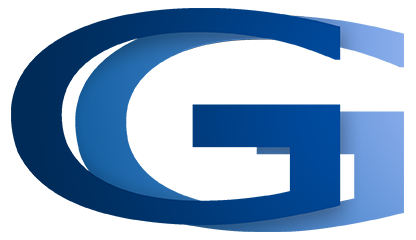Community Cleanup Days
-
 Paper Shredding and Household Battery Collection Now Offered at All Events8/25/2025 - 07:00 AM
Paper Shredding and Household Battery Collection Now Offered at All Events8/25/2025 - 07:00 AMPaper Shredding and Household Battery Collection expanded to all Community Clean Up Events!
On-site paper shredding and household battery collection will now take place at all six Community Clean Up events.
Bring up to four (4) boxes of paper that need shredding and all used household batteries (AA, AAA, C, D, etc.) to the event for free disposal!

The Garden Grove Sanitary District and City of Garden Grove, in partnership with Republic Services, are hosting a series of community cleanup days throughout the city in an effort to help residents properly dispose of bulky items, appliances, electronic waste, and green waste for free.
Items NOT accepted include hazardous waste, such as paints, oils, chemicals, pesticides, automotive batteries, and LED lights; concrete, dirt, rocks, brick, asphalt, sand, treated wood, tires; refrigerators, freezers, and AC units. For a list of banned items, click HERE.
For more information, contact Mark Ladney at 714-741-5372 or markla@ggcity.org.
Dates and locations are subject to change. Check the City's website and social media regularly.
DATE |
TIME |
LOCATION |
|---|---|---|
January 24, 2026 |
9:00 a.m. to 11:00 a.m. |
Pacifica High School, 6851 Lampson Ave |
March 14, 2026 |
9:00 a.m. to 11:00 a.m. |
Skylark Pre-School, 11250 Mac Murray St |
May 16, 2026 |
9:00 a.m. to 11:00 a.m. |
Garden Grove Park, 9301 Westminster Ave |
July 2026 TBD |
9:00 a.m. to 11:00 a.m. |
TBD |
September 26, 2026 |
9:00 a.m. to 11:00 a.m. |
H. Louis Lake Senior Center, 11300 Stanford Ave |
November 7, 2026 |
9:00 a.m. to 11:00 a.m. |
Garden Grove Public Works, 13802 Newhope St |

Republic Services also provides special collections of bulky items at no charge for single- and multi-family residents. Each household receives up to three bulky item pickups per calendar year and limited to up to 10 items per pickup by appointment only. To make an appointment, call (714) 238-3300. Multi-family residents should work with property management to determine the best location for pickups.

Orange County residents can dispose of their household hazardous waste items for free at any of the county's three Household Hazardous Waste Collection Centers:
Hours of Operation:
9:00 a.m. to 3:00 p.m., Tuesday through Saturday
- Anaheim Collection Center, at 1071 N. Blue Gum Street, Anaheim 92806
- Huntington Beach Collection Center, at 17121 Nichols Lane, Huntington Beach 92647
- Irvine Collection Center, at 6411 Oak Canyon, Irvine 92618
Lights, Batteries, and Electronics
- Fluorescent lamps and tubes. Includes fluorescent tubes, compact fluorescent lamps, metal halide lamps, and sodium vapor lamps. LED lights should not be placed in the trash because they often contain metals in amounts that exceed threshold limits. For more information on LED lights, visit the Department of Toxic Substances Control's Regulatory Assistance webpage.
- Batteries. Car batteries
Paints and Solvents
- Latex paint.
- Oil-based paint (also listed under flammables).
- Non-empty aerosol paint or solvent cans. All non-empty aerosol cans are banned from the trash.
- Solvents. Includes materials such as paint thinners, finger nail polish remover, etc.
Automobile-Related
- Antifreeze.
- Batteries.
- Motor oil and filters.
- Compressor oil.
- Tires.
Household and Landscape Chemicals
- Flammables and poisons. Includes solvent-based (oil) paints and reactive and explosive materials.
- Acids, oxidizers, and bases. Includes some pool chemicals and cleaners.
- Pesticides and herbicides. Many pesticides and herbicides cannot be disposed in the trash. Consult the product label or check with your local household hazardous waste agency.
Mercury-Containing Items
- Electrical switches and relays. These typically contain about 3.5 grams of mercury each. Mercury switches can be found in some chest freezers, pre-1972 washing machines, sump pumps, electric space heaters, clothes irons, silent light switches, automobile hood and trunk lights, and ABS brakes.
- Thermostats that contain mercury. There is a mercury inside the sealed glass "tilt switch" of the old style thermostats (not the newer electronic kind).
- Pilot light sensors. Mercury-containing switches are found in some gas appliances such as stoves, ovens, clothes dryers, water heaters, furnaces, and space heaters.
- Mercury gauges. Some gauges, such as barometers, manometers, blood pressure, and vacuum gauges contain mercury.
- Mercury thermometers. Mercury thermometers typically contain about a half gram of mercury. Many health clinics, pharmacies and doctor's offices have thermometer exchange programs that will give you a new mercury-free fever thermometer in exchange for your old one.
- Mercury-added novelties. Examples include greeting cards that play music when opened; athletic shoes (made before 1997) with flashing lights in soles; and mercury maze games.
Building Materials
- Asbestos. Includes some older kinds of cement, roofing, flooring and siding. More information on asbestos in your home is available from the U.S. EPA.
- Treated Wood. Wood that has been treated with chemical preservatives to help protect it from insect and fungal decay while being used; this includes wood that is treated with chromium copper arsenate (CCA). As of January 1, 2021, treated wood waste must be managed as a hazardous waste. The Department of Toxic Substances Control has a reference page with information regarding the current rules for handling treated wood waste.
- Construction Demolition Debris. Construction Demolition debris including drywall, roofing shingles, fencing, bricks, and other related materials.
Other
- Refrigerators.
- AC units.
- Compressed gas cylinders. Includes propane tanks used for BBQ or plumbing.
- Needles and sharps generated in home health care. Includes hypodermic needles, hypodermic needles with syringes, blades, needles with attached tubing, syringes contaminated with biohazardous waste, acupuncture needles, root canal files, broken glass items, such as Pasteur pipettes, and blood vials.
- PCB-containing materials. Includes paint and ballasts that contain polychlorinated biphenyls (PCB).
- Photo waste (silver bearing).
- Non-empty aerosol cans that contain hazardous materials. Many products in aerosol cans are toxic, and many aerosol cans contain flammables, like butane, as propellants for products like paint. If your aerosol can is labeled with words like TOXIC or FLAMMABLE don't put it in the trash unless it is completely empty.
